The expression, “I need to take a crap,” originated, at least according to some accounts, with Thomas Crapper, an English plumber and businessman whose name adorned his company’s toilets.
But I hope that this phrase will soon fall out of common usage.
Instead, I look forward to the day when people in search of a restroom say, “I need to take a Yee.”
It would be a great honor for the work Dr. Shannon Yee and his research team have been doing to develop an improved toilet to provide safe sanitation for billions of people around the world.
More than that, if this expression (which Yee fully supports) catches on, it would be a positive sign that our foundation’s efforts to spark a global sanitation revolution have been a success.
That was the dream a decade ago when our foundation challenged the world to create a toilet that doesn’t rely on sewage systems, doesn’t smell, and won’t cost more than a nickel a day to operate. The Reinvent the Toilet Challenge generated hundreds of new innovations in how to process human waste, including toilets and fecal sludge treatment systems that produce electricity, clean water, and fertilizer.
Yee, an associate professor of mechanical engineering at Georgia Institute of Technology, is now leading a group of researchers and private sector partners to take the best of these ideas and package them into a new, low-cost toilet—the Generation 2 Reinvented Toilet (G2RT)—to provide safe, affordable sanitation for the world.
At first glance, Yee may appear to be an unlikely candidate to lead a sanitation revolution. He’s not a sanitation expert. He’s a mechanical engineer who specializes in thermal energy technologies. But those skills are very relevant to how his reinvented toilet operates. It uses heat, energy, and pressure—much like an espresso maker—to process and treat feces.
Still, don’t expect to have a radically different bathroom experience with Yee’s toilet.
How you do your business won’t really change at all.
But what happens to it after will change, dramatically.
In existing toilets, human waste is carried away from our homes by sewers across many miles to treatment centers for processing. While this is a system that has served the world well, it is not sustainable or affordable for the billions of people living with unsafe sanitation. Sewage systems are incredibly expensive, and they waste precious water resources when many people around the planet face severe water shortages.
Instead of relying on a network of pipes and millions of gallons of water to move human waste for treatment, Yee’s toilet processes the poop and pee on site in the toilet itself, which is about the size of a washing machine.
Yee’s toilet has two parts. A frontend, which looks like a typical flush toilet, and a backend, where the waste is processed.
Here’s how it works:
When the toilet is flushed (with a small amount of water), the urine and feces are separated.
The urine and flush water go through a multi-step liquid filtration process that produces clean water. This water is then recirculated to flush the toilet.
And the feces, depending on the model, will take one of two pathways.
In one pathway, the feces get pasteurized, killing off all pathogens and eliminating odors before being pressed into cakes, which are then dried.
In the other pathway, the feces are combusted underwater at 373 degrees in a process known as micro-supercritical water oxidation, producing ash suspended in water.
The water is sent through the filtration process and the ash is dried.
Both the feces cakes and ash then fall into a receptacle that users can dispose of in the trash or compost.
That last sentence may have caught your attention. If there is any major behavior change required with this toilet, it’s emptying the toilet. But that only needs to happen every few days and the waste itself is odorless and pathogen free. It won’t be any more inconvenient than emptying the lint catcher on a clothes dryer.
Currently, Yee’s team is at the end of the development phase, fine-tuning the engineering components of the toilet. Next year, they will be field testing it in South Africa, India, and China. They also plan to have some toilets at demonstration sites in the U.S. and Europe, where Yee expects there will also be demand for a toilet that doesn’t rely on sewers or piped water.
Yee hopes that someday people will think of his toilet as an appliance like a coffee machine or refrigerator. It will be portable and can plug into a wall outlet or run on solar power.
Much more work needs to be done to bring Yee’s toilet to market. Like any mass-produced appliance, Yee’s toilet needs to be durable and simple to maintain and operate, which is why the field testing of the toilet will be critical for identifying any weaknesses in the design.
It also needs to be affordable. The target price is expected to be about $450. While that’s much more affordable than the infrastructure needed to support sewage systems, it may still be too expensive for the world’s poorest families. That’s why it will be critical for donors, governments, and private companies to work together to support the adoption of this new sanitation solution so it can have an impact on the billions of people who need it most.
But I’m optimistic that this toilet has a bright future. And I hope someday soon, you will have the opportunity to “take a Yee” yourself.



